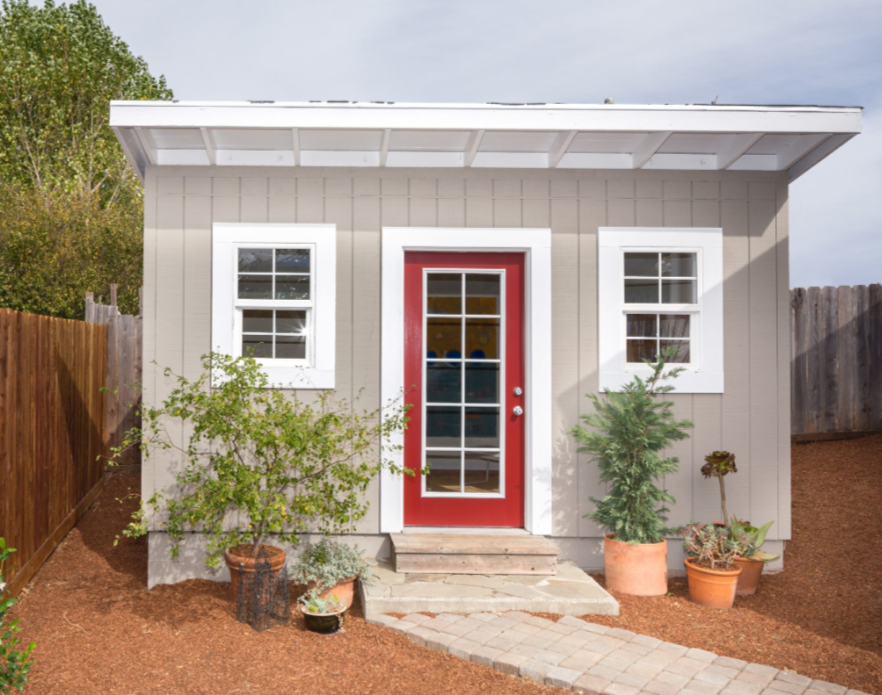What Is an ADU and Why Do You Need One?

An Accessory Dwelling Unit (ADU) is an independent residential structure that shares the same lot as a primary house. These structures have gained significant popularity in recent years, offering homeowners an effective way to maximize their properties. ADUs can be either attached to the main house, like a transformed basement suite, or detached, standing as a quaint backyard cottage.
Beyond their architectural appeal, they serve functional purposes. Whether you’re considering creating extra space for an aging parent, capitalizing on the potential to generate rental income, or envisioning a private retreat, an ADU can be the versatile solution. Their rise in popularity is attributed to changing family dynamics, economic considerations, and the evolving needs of homeowners in the modern age.
Factors to Consider When Choosing an ADU: Size, Design, Cost, and Regulations
Before embarking on your ADU journey, several foundational elements require attention. The size of the ADU should align with the available space on your lot while meeting the desired purpose. It’s not just about fitting it into your backyard; it’s about harmoniously integrating it into the existing environment, ensuring there’s room for utilities, walkways, and green spaces. The design should seamlessly resonate with the primary residence, creating a balanced aesthetic appeal for the entire property.
Budgetary considerations are paramount. It’s essential to define a budget, factoring in hidden costs like utility connections or landscaping. Delving deeper into the cost, homeowners should contemplate long-term ROI, especially if rental income is a goal. Last, but of paramount importance, is understanding local regulations. Zoning laws, neighborhood guidelines, and local statutes can influence the feasibility and design of an ADU.
How to Plan Your ADU Project: Budget, Timeline, and Permits
A well-thought-out plan sets the foundation of a successful ADU project. Financial planning involves striking a balance between what you envision and what you can afford. This also involves considering potential financial returns from the ADU, especially if it’s introduced as a rental space.
Time is another essential resource. Projects, even when well-planned, often face delays. Therefore, establishing a clear timeline, considering design, permit approvals, and construction, becomes crucial. Beyond the project’s physical timeline, homeowners should be prepared mentally, understanding that construction projects can be demanding. Early consultation with local building authorities will give a clear picture of necessary permits. Knowing this early can save time, reduce complications, and streamline the construction phase.
How to Design Your ADU: Layout, Style, and Features
Designing an ADU is an exciting venture that blends creativity with functionality. Start with the layout, keeping in mind space utilization. Especially in smaller ADUs, every square foot counts. Smart design choices, like sliding doors or loft beds, can maximize space utility.
The ADU’s style should complement the main house, maintaining a consistent theme, whether that is modern, rustic, or traditional. This stylistic continuity enhances the property’s overall visual appeal. Feature considerations are driven by the ADU’s intended use.
For instance, a rental unit might require a full kitchen, while a personal studio or retreat could be designed with a minimalist approach. Each feature should add value, either functionally or aesthetically.
How to Use Your ADU: Rental, Guesthouse, or Home Office
An ADU’s versatility is one of its most commendable attributes. If approached as a rental unit, its design should be somewhat neutral, appealing to a broader range of potential tenants. Neutral doesn’t mean bland; it means a balanced style that many can relate to. If the space is intended as a guesthouse, infuse it with warmth and comfort. Consider the needs and preferences of regular visitors, whether family or friends. An ADU as a home office introduces another set of considerations. In an age where remote work is becoming the norm, a quiet, efficient space that nurtures productivity, equipped with robust internet connectivity, becomes imperative.
How to Maintain Your ADU: Cleaning, Repairs, and Upgrades
Maintenance is the key to prolonging any property’s life, and ADUs are no exception. Regular cleaning keeps the space looking fresh and welcoming, and it also helps in identifying issues early on. Consistent maintenance practices reduce the wear and tear on appliances, surfaces, and furniture. Addressing minor repairs promptly can circumvent more significant, costly problems in the future.
Over time, as design trends evolve and new technologies emerge, consider upgrading the ADU. Upgrades, whether functional or aesthetic, can breathe new life into the space, ensuring it remains a cherished addition to your property for years to come.
How to Get Started with Adore Homes and Enjoy Your New ADU
The journey of introducing an ADU to your property might seem daunting at first, but with the right guidance it transforms into an enriching experience. Adore Homes prides itself on easing this transition, providing expertise at every juncture, from ideation to realization. As urban landscapes evolve and living dynamics shift, ADUs emerge as a contemporary solution to a variety of housing challenges. So, are you ready to redefine your living space, add value to your property, and possibly even augment your income? Reach out to Adore Homes today and, together, let’s bring your envisioned ADU to life.
